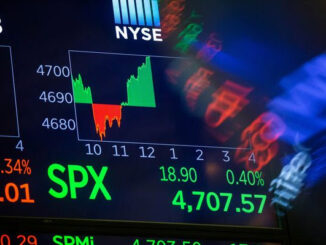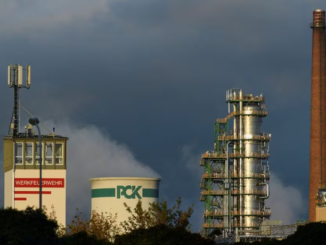
- This week, the front-month futures at the TTF hub, the benchmark for Europe’s gas trading, hovered around $47.
- Analysts: Europe shouldn’t count on another warmer-than-usual winter and less competition from Asia as it starts to prepare for the 2023/2024 winter.
- European importers may have to pay up for spot supply to beat competition from the Asian market.
Europe successfully avoided a gas shortage crisis this winter thanks to high LNG imports, reduced demand, and milder weather. As a result, European natural gas prices have fallen to the levels from January 2022, just before the Russian invasion of Ukraine. This week, the front-month futures at the TTF hub, the benchmark for Europe’s gas trading, hovered around $47 (43 euros) per megawatt-hour (MWh), down from over $142 (130 euros) at the start of the 2022/2023 winter heating season and from the record-high of $350 (320 euros) per MWh in August 2022.
Warmer winter weather and subdued LNG demand from Asia helped Europe fill storage sites to adequate levels before the heating season and exit that season with inventories well above historical averages.
As fears of a gas crunch have subsided this winter, pulling European natural gas prices down, Europe shouldn’t count on another warmer-than-usual winter and less competition from Asia as it starts to prepare for the 2023/2024 winter, analysts say.
Contrary to initial expectations, the 2022/2023 winter went surprisingly well, but the energy crisis isn’t over, and Europe is not out of the woods yet.
Last year, Asia—including China—saw LNG imports decline amid high spot prices and a slowdown in the Chinese economy. With China’s reopening, however, demand for gas and LNG is set to rebound, increasing the competition between Asia and Europe for spot supply, analysts say.
They also warn that next winter could be much worse for Europe if Asian—especially Chinese—demand rebounds and intensifies the competition between the European and Asian markets for drawing more LNG supply.
In a market with stronger competition from Asia for LNG supply, the current European gas prices may not be enough to continue attracting spot cargoes, analysts at Swedish bank SEB said in a note this week.
The current European gas price is too low. Prices between 60 and 75 euros/MWh are probably needed in 2023 to keep demand subdued, LNG imports high, and inventories elevated.
“The EU will have to match whatever Asia is willing to pay plus a premium in a bidding war to keep LNG imports flowing to the EU,” SEB analysts wrote.
The bank expects the European TTF price to climb from early to mid-April and average 60 euros/MWh in the second quarter of 2023, followed by 70 euros/MWh and 75 euros/MWh for Q3 and Q4, respectively.
Spot LNG demand in Asia hasn’t been great so far this year, with prices falling to a 21-month low last week, per industry estimates cited by Reuters
The weekly average front-month futures prices for LNG cargoes in East Asia fell to $12.72 per million British thermal units (MMBtu) in the week to March 30, the EIA said in its weekly report citing data from Bloomberg Finance. On the other hand, the equivalent of Europe’s benchmark price in MMBtu rose to a weekly average of $13.47/MMBtu.
Europe’s price is still above the one in Asia by a slight margin, but with Asian demand expected to pick up later this year with the Chinese reopening, European importers may have to pay up for spot supply to beat competition from the Asian market.
Last year, LNG imports to China fell by an extraordinary 20%, Wood Mackenzie has estimated.
“One of the risks of China’s return to normality has been the impact it could have on European gas imports which swallowed up a substantial proportion of the supply void left by the country’s relative inactivity,” the consultancy said in a report on how the Chinese reopening could super-charge energy commodity prices this year.
According to WoodMac, European LNG imports for this year are safe for now.
“[The] global gas market is not out of the woods; it is a structurally tight market and prices are volatile,” said Massimo Di Odoardo, Vice President, Gas and LNG research, at WoodMac.
“But with demand trimmed by high prices, recent mild weather and markets proving resilient in a world without Russian pipeline exports to Europe, stronger-than-expected Chinese LNG demand is unlikely to lead to a repeat of the chaos seen in 2022.”



